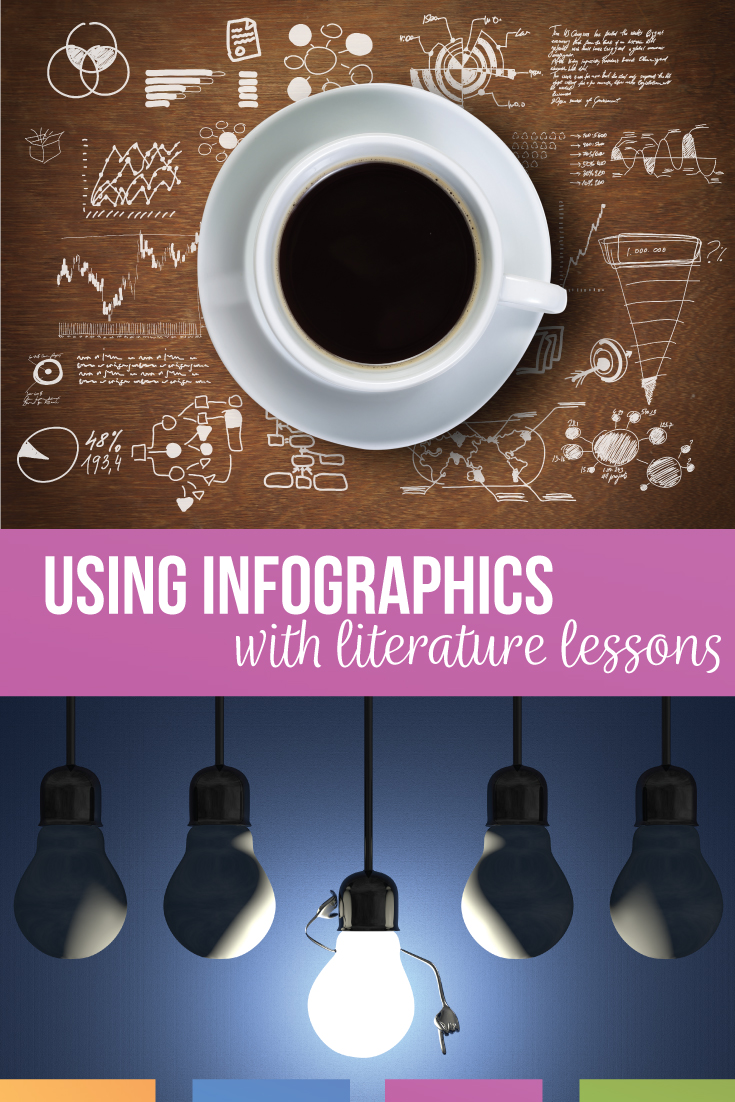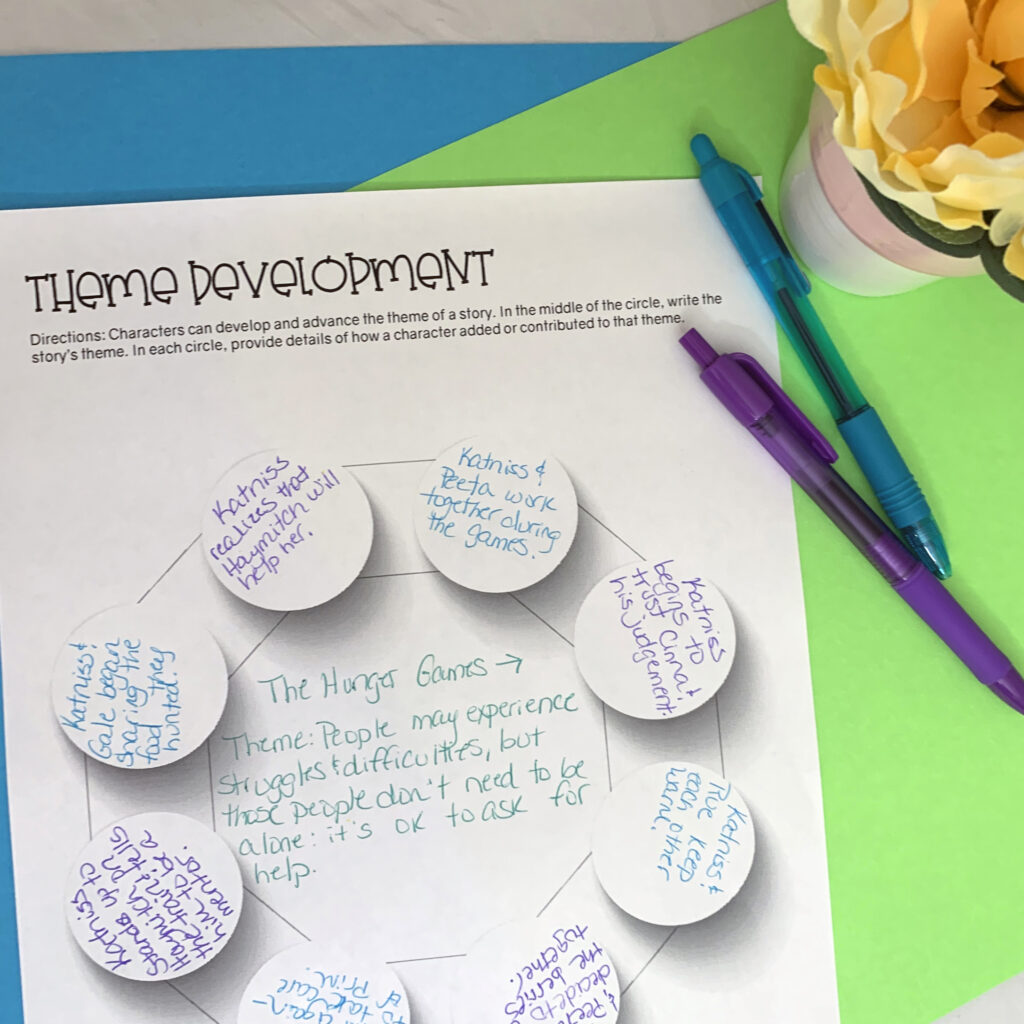Recently, I’ve spiced up literature lessons with infographics.
I love infographics. Plus, I love literature lessons.
Infographics are a modern approach to outlines, memes, and other “clickable” content. My students are familiar with infographics, and they show me their favorites from around the web, usually pertaining to a television show or movie. Many of my students have Pinterest boards full of infographics. Since I love infographics and my students use them, I had to find a way to use them in class.
Plus, I’m always looking for scaffolding to help students move toward literary analysis. Infographics can be a stepping piece before students move to a literary analysis essay. (You can download all of my literature activities in a free PDF by clicking on the picture below.) Sometimes, to get students to truly analyze a piece of literature, we need to break down the concepts. Infographics do that in a visual way, and you can easily add them to literature lessons.
I wanted to fill my literature lessons with infographics, at least enough to get feedback from students. I experimented (and had some failings!), but I finally found a balance for directions with infographics. I think most teachers can make their own and use these ideas.
An infographic breaks down information, so teachers can use infographics to break down any specific concept. In this blog post, I’m talking about using infographics with literature. Specifically, I’ve experimented with complex characters and motivations.

Used in the classroom, infographics are a visual representation of material, a modern twist on graphic organizers. Here is how I added depth to literature lessons with infographics.
Make infographics meaningful to each student.
Turning students loose and asking them to build an infographic was my first mistake, and I’m pretty sure I didn’t meet my standards.
Create a slight structure. For instance, when I wanted students to break down a character, I didn’t simply ask them to break down the character because that is too general of directions. Instead, I labeled a few sections for a character; I put “indirect characterization” twice and direct characterization once. We discuss why: readers most often learn about characters indirectly. I left other portions of the infographic blank for students to choose. . .
Allow the portions to be personalized.
I want students to own the infographic and make it represent and explore the character, theme, or setting we are studying. I leave enough portions blank or allow the pieces to be moved so students can decide what best explains their interpretation.
I also start the infographic (I typically create these in Powerpoint) with basic circles and squares. What if students add cubes? Diamonds? The pieces are interactive and moveable. Encourage students to add pieces to the infographic.
Encourage the process.
Reading a book? Great. Good readers reread. Because the infographics must be comprehensive, students must return to the book. I typically introduce character infographics half-way or more than half-way through a novel. Students may not feel they have the best answer for a spot. Perfect! Encourage students to return to the infographics to support review and ownership.
As we continue to read, I move students toward literary analysis and tackle some of those more complex standards. How do elements interact? How does a particular setting symbolize a character? When students build on their infographics, start showing students how the literary devices influence and shape each other.
Print them out.
I know: digital! Share them digitally (after checking them for accuracy). I do compile the infographics and share them for review.
Excellent ones make perfect bookmarks and classroom displays. I use them for bulletin boards, something I struggle to make appropriate for older students.
Plus, during meet the teacher night or parent teacher conferences, displays are helpful to provide ideas of our classroom activities. Sometimes, literature lessons for older students don’t lend themselves to a display.
Celebrate creativity.
What font embodies each character? Is the picture accurate? What colors best fit a character or theme? Students may have a different image of a character. Perfect! Draw the character, take a picture, and upload it for the infographic. Spruce up your infographic lesson plan.
Part of media literacy is understanding that colors, shapes, and fonts contribute to the overall meaning of a message. Be sure to point out the intentional and perhaps unintentional messages students might send as they develop their infographics.
Programs and apps exist for digital ones, but I didn’t have good luck with them. I used basic shapes and designs in Powerpoint. Then, I encouraged students to add pictures from around the web.
I enjoy infographics because students are familiar with them. They are simple organizational tools that allow students to categorize information, and honestly, you can add an infographic lesson plan to other areas of class. Teachers can differentiate assignments with them and clarify confusion on an individual level. If you have established literature activities that you and your students love, you can probably add in infographics.
Infographics are a non-intimidating way to review a story or focus on a character. Currently, I built infographics to analyze characters. Let me know what has worked for you.



